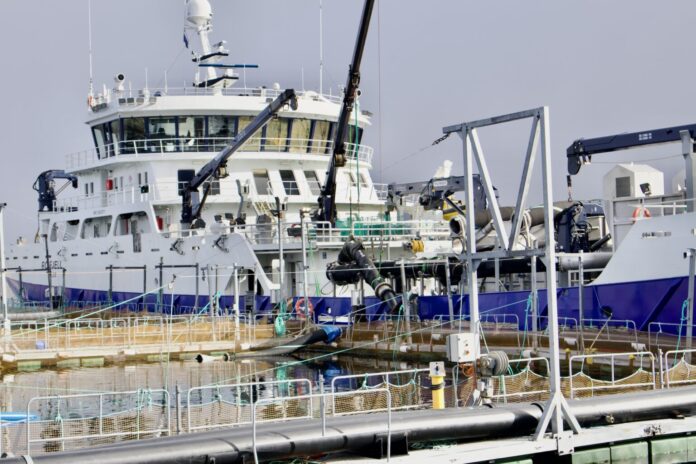But a contract share of 59 percent dampened the Norwegian salmon farmer’s result.
High salmon prices lifted operational EBIT to NOK 1,048 million (€108.7 million) in the second quarter. A total of 32,400 tonnes of salmon were slaughtered, which gives NOK 32.35 (€3.3) per kg in operational EBIT.
An operational operating profit of NOK 1,079 million (€112 million) was expected in advance, according to the average of estimates obtained by Infront from eleven analysts for TDN Direkt.
“In the second quarter, our dedicated employees continued to deliver impressive results and products of excellent quality. Our consistent and meticulous effort to operate on the salmon’s terms and with a focus on sustainability in everything we do, has once again proven to be a recipe for success,” Linda L. Aase, CEO of SalMar, said.
Fixed price contracts
Farming Mid-Norway and Northern Norway continued the trend with strong biological and operational results, which resulted in a record high operational EBIT per kilo of NOK 58.64 (€6.1) and NOK 69.12 (€7.2) respectively. The underlying operations in the Sales and Industry segment were solid in the quarter, but strong salmon prices and already concluded fixed price contracts affected the financial result. Icelandic Salmon delivered solid results in the quarter driven by good biological performance, high price achievement and stable cost development.
“Our results were of course also supported by high salmon prices in the market, although this fortunate market situation weakens the financial results in Sales and Industry due to our fixed price contracts,” Aase said.
In the second quarter, the proportion of salmon sold under contract was 59 per cent. For the third quarter, the contract share is expected to be around 35 per cent, and around 40 per cent for the whole year.

The expansion of the Senja smolt plant is nearing completion and the first spawning was carried out this summer and the first smolt delivery is expected in 2023. The first smolt delivery from the Tjuin plant is expected in 2024. At the InnovaNor slaughter and processing plant, which was completed last year, the escalation of activity continues at slaughterhouse and further processing in 2022.
The upgrade of “Ocean Farm 1” and the design of new units are going according to plan and the company will carry out new offshore investments as soon as the regulatory framework is in place. The company’s ambition is to produce 150,000 tonnes of salmon offshore by 2030.
Conditional
The voluntary offer to acquire all outstanding shares in NTS was accepted for 52.7 per cent of the shares in NTS. At the end of May, SalMar announced a merger with Norway Royal Salmon (NRS), which was approved by the companies’ shareholders in subsequent extraordinary general meetings at the end of June. The transactions were approved by the Norwegian Competition Authority in mid-July. Completion of the transactions is still subject to several conditions. The timing of when these conditions will be fulfilled is still uncertain.
SalMar expects a higher slaughter volume, somewhat higher cost levels and a contract share of around 35 per cent in the third quarter.
Volume guidance for 2022 is kept unchanged in all regions. Expected slaughter volume in Norway is 175,000 tonnes, Iceland 16,000 tonnes and for Scotland 46,000 tonnes.

